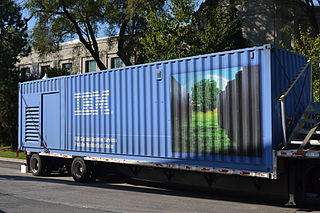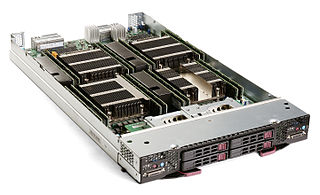It has been suggested that Datacenter-in-a-Box be merged into this article. (Discuss) Proposed since June 2018. |
This article contains content that is written like an advertisement .(August 2018) (Learn how and when to remove this template message) |


A micro data center (MDC) is a smaller or containerized (modular) data center architecture that is designed to solve different sets of problems that take different types of compute workload that does not require to traditional facilities. Whereas the size may vary from rack to container, a micro data center may include fewer than 4 servers in a single 19-inch rack. It may come with built-in security systems, cooling systems, and/or fire protection. Typically there are standalone rack-level systems containing all the components of a 'traditional' data center. [1] including in rack cooling, power supply, power backup, security, fire and suppression. They could be rapidly deployed indoors or outdoors or also in rugged terrains.

A modular data center system is a portable method of deploying data center capacity. A modular data center can be placed anywhere data capacity is needed.
Contents
Mid 2017, introduced by DOME, technology was demonstrated that packs 64 high-performance servers, storage, networking, power and cooling integrated in a 2U 19" rack-unit. This packaging, sometimes called 'datacenter-in-a-box' allows deployments in spaces where traditional data centers do not fit, such as factory floors (IOT) and dense city centers especially for edge-computing and edge-analytics.
DOME is a Dutch government-funded project between IBM and ASTRON in form of a public-private-partnership focussing on the Square Kilometre Array (SKA), the world's largest planned radio telescope. SKA will be built in Australia and South Africa. The DOME project objective is technology roadmap development that applies both to SKA and IBM. The 5-year project was started in 2012 and is co-funded by the Dutch government and IBM Research in Zürich, Switzerland and ASTRON in the Netherlands. The project ended officially on 30 September 2017.

The Internet of things (IoT) is the extension of Internet connectivity into physical devices and everyday objects. Embedded with electronics, Internet connectivity, and other forms of hardware, these devices can communicate and interact with others over the Internet, and they can be remotely monitored and controlled.
Edge computing is a distributed computing paradigm which brings computer data storage closer to the location where it is needed. Computation is largely or completely performed on distributed device nodes. Edge computing pushes applications, data and computing power (services) away from centralized points to locations closer to the user. The target of edge computing is any application or general functionality needing to be closer to the source of the action where distributed systems technology interacts with the physical world. Edge computing does not need contact with any centralized cloud, although it may interact with one.
Their size, versatility and plug & play features make them ideal for use in remote locations, for a branch office, or even for use temporarily at locations that are in high risk zones. [2]
See also Asperitas Microdatacenter and DOME MicroDataCenter
A microdatacenter is a small, self contained data center consisting of computing, storage, networking, power and cooling. Micro data centers may employ water cooling to achieve compactness, low component count, low cost and high energy efficiency. Its small size allows decentralised deployment in places where traditional data centers cannot go, for instance edge computing for Internet of things.










